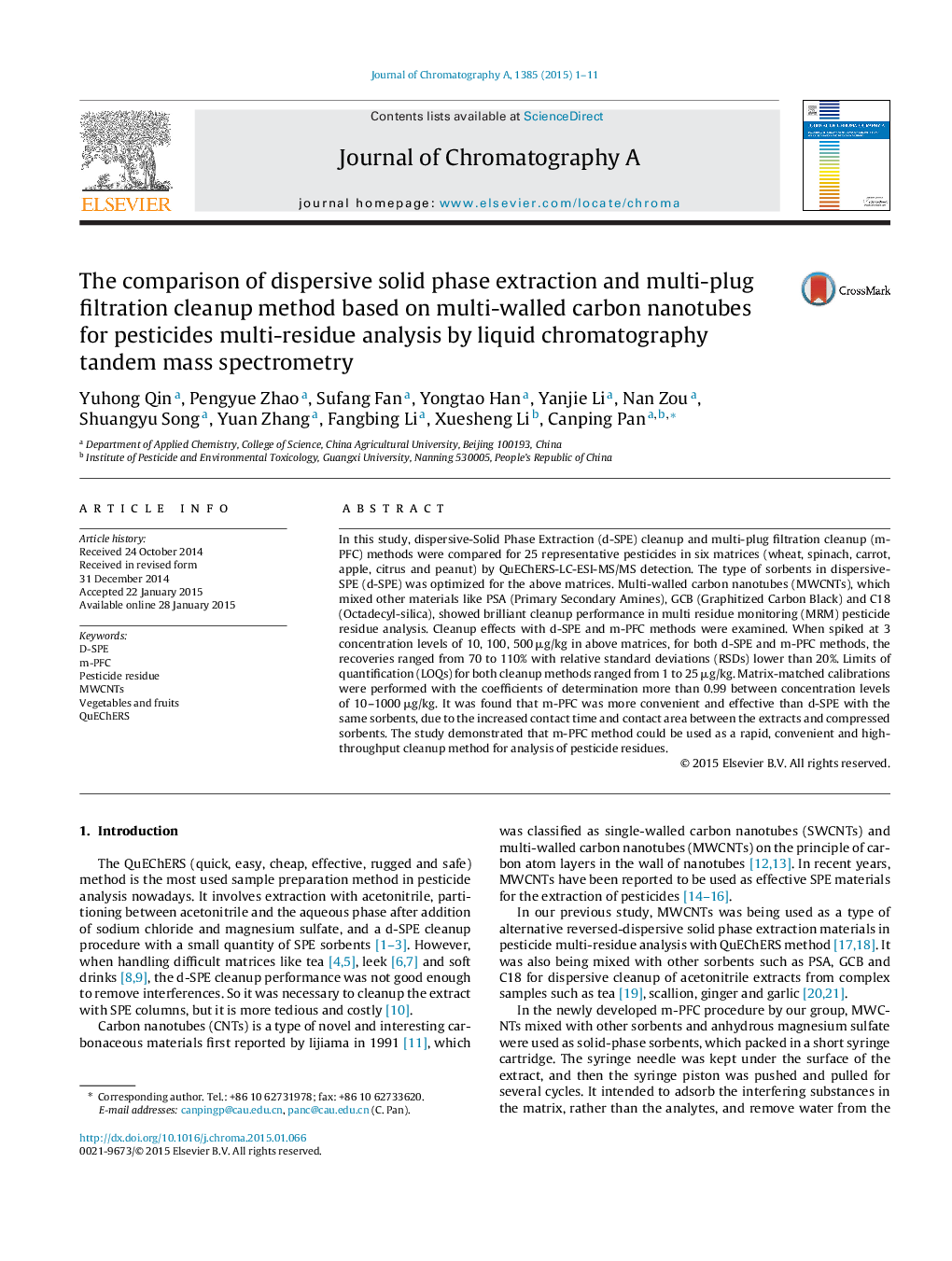| کد مقاله | کد نشریه | سال انتشار | مقاله انگلیسی | نسخه تمام متن |
|---|---|---|---|---|
| 1199538 | 1493541 | 2015 | 11 صفحه PDF | دانلود رایگان |
• Comparison the cleanup performance of d-SPE and m-PFC on pesticide multiresidue analysis.
• Improved previous m-PFC columns to simplify the equipment.
• M-PFC had more stable recoveries and lower RSDs.
• M-PFC method reduced matrix interferences and had less matrix effects.
• M-PFC is a rapid and high-throughput cleanup method on analysis of pesticides.
In this study, dispersive-Solid Phase Extraction (d-SPE) cleanup and multi-plug filtration cleanup (m-PFC) methods were compared for 25 representative pesticides in six matrices (wheat, spinach, carrot, apple, citrus and peanut) by QuEChERS-LC-ESI-MS/MS detection. The type of sorbents in dispersive-SPE (d-SPE) was optimized for the above matrices. Multi-walled carbon nanotubes (MWCNTs), which mixed other materials like PSA (Primary Secondary Amines), GCB (Graphitized Carbon Black) and C18 (Octadecyl-silica), showed brilliant cleanup performance in multi residue monitoring (MRM) pesticide residue analysis. Cleanup effects with d-SPE and m-PFC methods were examined. When spiked at 3 concentration levels of 10, 100, 500 μg/kg in above matrices, for both d-SPE and m-PFC methods, the recoveries ranged from 70 to 110% with relative standard deviations (RSDs) lower than 20%. Limits of quantification (LOQs) for both cleanup methods ranged from 1 to 25 μg/kg. Matrix-matched calibrations were performed with the coefficients of determination more than 0.99 between concentration levels of 10–1000 μg/kg. It was found that m-PFC was more convenient and effective than d-SPE with the same sorbents, due to the increased contact time and contact area between the extracts and compressed sorbents. The study demonstrated that m-PFC method could be used as a rapid, convenient and high-throughput cleanup method for analysis of pesticide residues.
Journal: Journal of Chromatography A - Volume 1385, 13 March 2015, Pages 1–11
